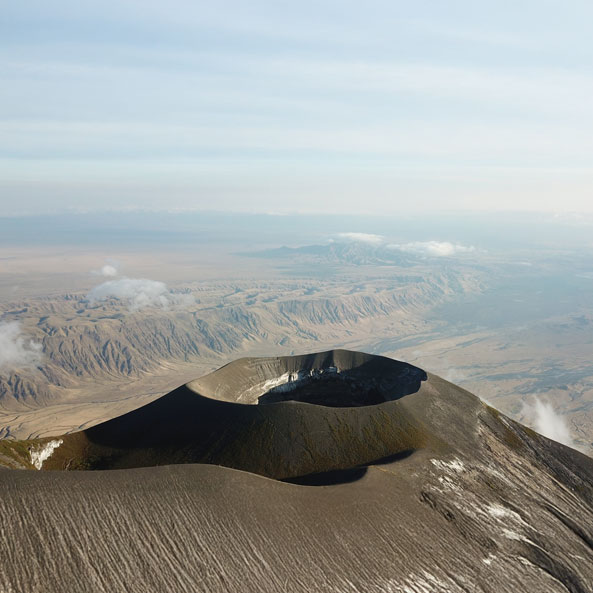Ol Doinyo Lengai hike

Ol Doinyo Lengai hike
9,481 ft / 2,890 m | 7–10 hrs roundtrip | Challenging | Active volcano climb
“Ol Doinyo Lengai” means “the mountain of God” in the Maasai language. This striking peak rises to 9,481 feet (2,890 meters) and is the only active carbonatite volcano in the world. Deeply sacred to the Maasai, it is believed to be the dwelling place of their god, Ngai.
An extraordinary geological wonder
Ol Doinyo Lengai is geologically one of a kind. It erupts carbonatite lava—an extremely fluid, blackish lava rich in sodium and potassium minerals. Unlike typical volcanic lava, which erupts at over 2,000°F (1,100°C), Ol Doinyo Lengai’s lava flows at only 930–1,110°F (500–600°C). The result? A surreal, shifting landscape of brittle rock, grey ash, and mineral-rich crust that changes color and form rapidly when exposed to air and moisture. It’s like walking on another planet.
The trek: intense, beautiful, and worth it
This is not a walk for the faint-hearted. The ascent to the crater rim takes about 4 to 6 hours, with the descent adding another 3 to 4 hours—totaling 7 to 10 hours of demanding hiking on steep, exposed terrain. You’ll gain over 5,577 feet (1,700 meters) in elevation. No technical climbing skills are required, but you must be fit, mentally prepared, and well-supplied with water and snacks.
At the summit ridge, you’ll be rewarded with panoramic views stretching to the Ngorongoro Highlands, Lake Natron, and even Mount Kilimanjaro and Mount Meru on clear days. The final 30-minute summit push delivers an unforgettable sunrise, so early starts (typically around midnight) are essential to avoid the searing midday heat and to make the most of the golden morning light.
